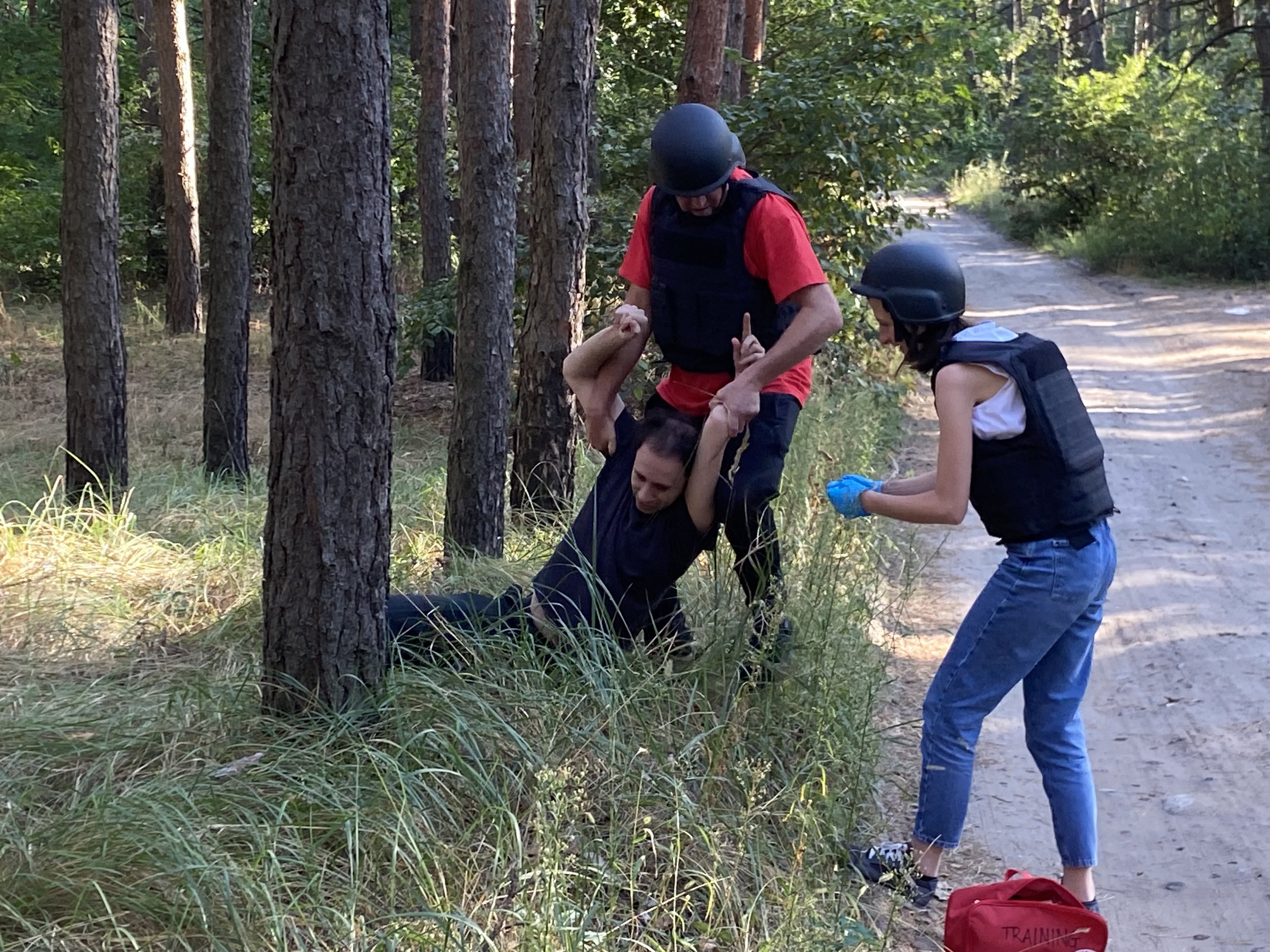Earlier this month Spearfish Ukraine delivered its inaugural HEAT course just outside of Dnipro
Earlier this month Spearfish Ukraine delivered its inaugural HEAT course just outside of Dnipro. We were pleased to see weeks of hard work pay off and watch the course unfold as planned. And while it was satisfying to see our students take away valuable learning, we ourselves left with an important lesson.
Our primary objective was to provide 14 years of Spearfish’s experience delivering HEAT and combine it with our instructors’ own knowledge of the Ukrainian context in order to create and deliver market-leading safety training for the humanitarian sector. For example, Yuliia has been a mine action officer locally and worldwide for nearly a decade. Dmytro has delivered and interpreted trauma first aid courses for a range of different organisations and audiences in Ukraine. Matt has spent years as a paramedic in the Donbas, the UK and elsewhere. And Charlie has been on the front line in Ukraine since 2015, formerly as an OSCE observer in Donetsk and Mariupol. Together, we were able to design a course that helps the humanitarian sector mitigate the specific threats inherent in Ukraine today.
Our students were from diverse backgrounds themselves. Two were emergency doctors from Dnipro, one driver and one security officer were from international NGOs, one international student was new to Ukraine and one volunteer was from a local NGO. Their own experiences were incredibly valuable to the course, whether that be attending multiple vehicle collisions in a medical capacity, understanding gender-based violence at checkpoints, explaining the language and coordination problems between local and international NGOs or the describing the current threats that face volunteers helping IDPs. Incorporating that knowledge, and that of future students, into the Spearfish Ukraine HEAT course will be critical to remaining current and relevant as we deliver more courses.
Surprisingly, only the one international student from an INGO had attended a HEAT course previously. The principle was actually relatively alien to most of the other students. For the Spearfish Ukraine staff, it was gratifying to see the students appreciate the course content, both in terms of specific lessons and holistically as a course that incorporated practical sessions and scenarios. Some understood “the risk matrix” but had never changed a wheel, while others knew how to “stop the bleed” but hadn’t considered the asbestos threat from damaged buildings. We were very humbled to receive great feedback at the end of the course, knowing that without students’ enthusiastic participation, the course would not have been half as engaging.
That national Ukrainian staff were new to HEAT is unfortunate. National staff across the humanitarian sector are disproportionately represented in casualty statistics. For example, the Aid Worker Security Report 2023 states that of 444 aid worker victims of violence worldwide last year, 421 (95%) were national staff.[1] The pattern is virtually identical for all the years on record. While sobering, that is perhaps not surprising when considering that national staff usually make up the bulk of the humanitarian sector workforce. What is surprising is that they often miss out on the same level of training and resources as their international counterparts, be that HEAT training, PPE provision, insurance packages, healthcare etc. Often, that may be because local NGOs simply lack the resources that large international NGOs command. Yet where those large international NGOs ask national staff to face in-country threats, either through direct employment, contracting or often through partnering, they have a duty to ensure those risks are mitigated for.
Partnerships between large international NGOs and smaller Ukrainian NGOs are critical in the delivery of humanitarian assistance to those who need it. They allow funding and expertise to be channelled through people who know the ground, understand the needs, speak the language and have the permanency in-country. Often, national staff working for Ukrainian NGOs are volunteers, working purely on the principle of supporting their communities, or earning little more than a subsistence salary. While they may take risks voluntarily, and are able to stay lean and operational as a result, the budgets that come in from abroad should be deployed to keep them safe in their work, especially when their work is on behalf of international NGOs.
Spearfish Ukraine wants to encourage that duty of care to extend beyond the books of international NGOs to include those local volunteers mentioned in the statistics above. On our recent course, we offered some free places to the smallest NGO’s without funds for such training. As we work with larger clients, we want to develop mechanisms where a similar approach can be incorporated alongside paying attendees. We hope to be part of an industry shift where the safety needs of Ukrainian NGOs are considered in international humanitarian projects’ budgets.
We are excited to see what the future holds for Spearfish Ukraine, but at the same time the tragedy that unfolded shortly after we wrapped up the course reminds us that what we are doing is important for those working day-to-day in field. We would like to extend a thanks to our students for their valuable input and engagement on the course and hope to replicate the success as we begin to scale up our delivery.
[1] Humanitarian Outcomes, Aid Worker Security Report 2023, https://www.humanitarianoutcomes.org/AWSR_2023
To learn more about our HEAT Courses in Ukraine please contact rosieturner@spear-fish.com





